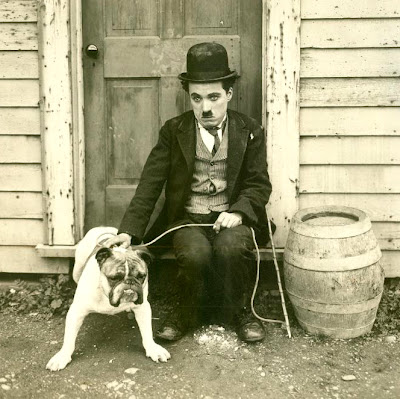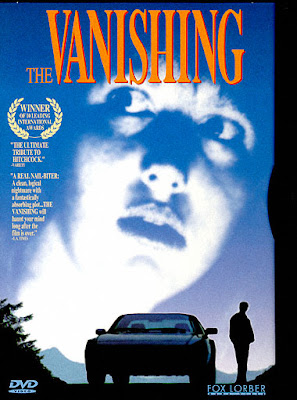Cinema’s First Icon on our Screen

Charlie: The Life and Art of
Charles Chaplin (2003)
Director-writer: Richard Schickel
Narrator: Sydney Pollack
Producers: Richard Schickel, Doug Freeman, Bryan McKenzie
Editor: Bryan McKenzie
Music: Charles Chaplin
Directors of photography: Kris Denton, Thomas Albrecht, Rob Goldie, John Halliday, Ross Keith, Graham Smith
Running time -- 133 minutes
English with English sub titles.
Ashwin Hospital Auditorium, Ganapathy, Coimbatore
27th December 2008 ; 5.45 pm
The film was directed and produced by Richard Schickel, also a film critic for Time, and it's a pretty thorough going-over of both the life and the work, with a decided (and thankful) emphasis on the latter. Sydney Pollack narrates this story of Cockney music hall performer who found glory in Hollywood with a tattered bowler hat, a rickety old cane, and a bit of greasepaint—Chaplin's Little Tramp may be the most identifiable and imitated screen icon of all time.
He was also instrumental in inventing the film grammar that we all take for granted, and for helping to expand the possibilities of this new medium. It's easy to point and shoot, but Chaplin figured out how to expand and compress space, how to use editing for the best possible comic timing, and how to find poetry in little more than two people walking down a street.
Charlie, Richard Schickel's clip-and-chat portrait of Charlie Chaplin, the most celebrated and arguably the most compelling persona on planet earth during the first half of the 20th century, opens by asking the spectator to imagine a world before Chaplin. It's almost impossible.
Richard Schickel's documentary about the 20th century's greatest cinematic figure is a worthy addition to the growing catalog of film history chronicles. This mix of biography and cultural history assembles archival film clips, rare behind-the-scenes footage, and recent interviews to track Chaplin (1889-1977) starting with his harsh childhood in the London slums and his youth as a working-class music-hall performer. We witness the seminal moments of Chaplin's screen career with his improvised mugging in Kid Auto Races at Venice, the 1914 short that records the nascent Little Tramp's first onscreen appearance.
What follows is Chaplin's unprecedented rocket to world-class recognition and wealth. The film spends quality time on his early years with Mack Sennett, the build to his greatest shorts (such as The Immigrant and Easy Street), and the classic features The Kid, The Gold Rush, The Circus, City Lights, and Modern Times. Two of Chaplin's later, and lesser, features, Limelight and Monsieur Verdoux, are placed in good context. Schickel — perhaps to avoid mood-shattering cantankerousness — barely even glosses over the two painful failures that capped the old comedian's career, A King in New York and A Countess from Hong Kong. Home movies give us a warm peek at Chaplin in his twilight years as an exile and doting father in Switzerland.
An impressive array of talking heads add their own personal insights and reflections. Actors Robert Downey Jr., Johnny Depp, Bill Irwin, and Marcel Marceau illuminate the intricate physical and emotional components of Chaplin's Little Tramp. Joining fellow directors Woody Allen and Richard Attenborough, Martin Scorsese offers a gleeful exegesis of A Woman of Paris, and Milos Forman gives a personal remembrance of The Great Dictator's impact on Europe under the Nazi threat. Also on hand are critics and biographers Andrew Sarris, David Robinson, David Thomson, Jeannine Basinger, and Jeffrey Vance; Chaplin collaborators Norman Lloyd, Claire Bloom, and David Raskin; and his children Geraldine, Sydney, and Michael. All the while, Schickel reminds us that in multiple mediums he is an engaging writer, and Sydney Pollack makes an able narrator whose authority as a gifted director is equaled by his casual delivery.
Not exactly starstruck but pretty much all celebration all the time, Charlie concentrates mainly on Chaplin the artiste. The documentary comes full circle with some wonderful home-movie performances shot in Switzerland in the 1970s. The mugging octogenarian is not so different from the 25-year-old who forces himself on the audience in Kid Auto Races.
Richard Schickel

Richard Schickel is a film critic and documentary film maker . A film reviewer for Time magazine since 1972, Richard Schickel has attained the stature of a dean of movie history and criticism. Rather than merely turn in his weekly copy, collect columns in occasional book form, and appear as a guest in other people’s documentaries, Schickel has quietly built a respectable body of studies on film .
Richard Schickel has tackled Charlie Chaplin before, in a spirited essay collected in his 1989 book Schickel on Film. There he revealed himself to be that rarest of enthusiasts, an unabashed fan who can celebrate the object of his affection yet won't look away when his subject's hagiography deserves a poking. Schickel is also the writer-director-producer of documentaries on Woody Allen, Clint Eastwood, Alfred Hitchcock, and other filmmaking A-listers. In 2003 he crafted this affectionate, thoughtful documentary on Chaplin. And although he has softened his gruff-love a bit, that distinctive Schickel voice still comes through even as it's spoken by narrator Sydney Pollack.
Richard Schickel has written over 30 books, among them The Disney Version; His Picture in the Papers; D.W. Griffith: An American Life; Intimate Strangers: The Culture of Celebrity; Brando: A Life in Our Times; Matinee Idylls; and Good Morning Mr. Zip Zip Zip . His 30 documentaries include Charlie: The Life and Art of Charles Chaplin; Woody Allen: A Life in Film; and Shooting War , which is about combat cameramen in World War II. He has just completed a book about Elia Kazan and a documentary about Martin Scorsese, which is the eighteenth in the series of portraits of American film directors he has made over the course of his career. He has held a Guggenheim Fellowship, and was awarded the British Film Institute Book Prize, the Maurice Bessy prize for film criticism, and the William K. Everson Award for his work in film history. His recently completed reconstruction of Samuel Fuller's classic war film, The Big One , was named one of the year's Ten Best Films by the New York Times , and he has won special citations from the National Society of Film Critics, The Los Angeles and Seattle Film Critics Associations, and Anthology Film Archives. He has been reviewing movies for Time since 1972 and writes a monthly column, Film on Paper, for the Los Angeles Times Book Review.
Periodicals:
1965-1972, Film Critic, Life Magazine
1972-present, Film Critic, Time Magazine
2002-present, Film on Paper, monthly column, Los Angeles Times Book Review
1954-present, Essays, articles and reviews, most major publications
Selected Book Publications : 23
Selected Television & Film Productions : 30

 hich is in keeping with the city's concrete sensibility.
hich is in keeping with the city's concrete sensibility.





